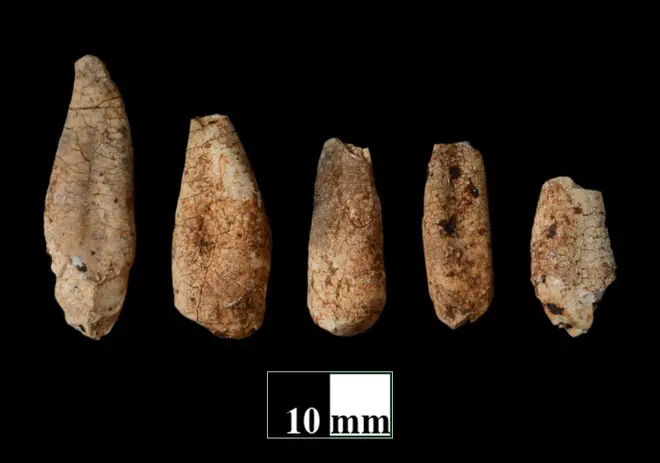For centuries, it is believed that Pattanam (Ernakulam district) in Kerala was part of the ancient Port City of the Muziris. Historians consider the port city to have played an key role in cultural and trade exchanges between India and the Middle-East, North Africa and the Mediterranean regions.
The belief stems from the classical Greco-Roman records as well as Tamil and Sanskrit sources.
A research by team of scientists, who analysed the genetic remnants, found that the beliefs, indeed, now has a scientific backing. Scientists used the DNA from the human skeletons and found that the samples indicate the presence of both South Asian and West Eurasian-specific lineages.
A recent study of archaeological pieces from Pattanam, and their ancient DNA analyses, Kumarasamy Thangara and P J Cherian, strengthens the belief. Their findings were published in the journal Genes.

Human skeletal remains dating back to first century BCE. Source: CCMB
Archaeologists and scientists found human bones, storage jars, a gold ornament, glass beads, stone beads, utilitarian objects made of stone, copper and iron, pottery, early Chera coins, brick wall, brick platform, ring well, wharf with bollards, and a six-metrer-long wooden canoe parallel to the wharf structure about 2.5 m below surface level.
“These structures indicate a vast urban settlement. The excavations suggest that the site was first occupied by the indigenous Megalithic (Iron Age) people, followed by the Roman contact in the Early Historic Period,” they said.
“It appears that the site was continuously occupied at least from the 2nd century BC to the 10th century AD,” P J Cherian, from PAMA Institute for the Advancement of Transdisciplinary Archaeological Sciences, Ernakulam.
Scientists used the DNA from the human skeletons to pinpoint the genetic ancestry of the people found in the region.
Niraj Rai, co-corresponding author of the paper, and a Senior Scientist at the DST-Birbal Sahni Institute of Palaeosciences, Lucknow said, said that an analysis of the mitochondrial DNA of 12 samples proved that there was presence of people from both South Asian and West Eurasian-specific lineages.
The harsh climatic conditions of India are not always favourable to ancient DNA research, the scientists said.
“Most of the excavated skeletal remains from the Pattanam site were in a very fragile state due to the tropical, humid, and acidic soil conditions. However, we have adopted the best practices in the field of ancient DNA to analyse the samples,” the paper said.
“The unique imprint of West Eurasian and Mediterranean signatures found in these samples exemplify a continuous inflow of traders and multicultural mixing in ancient South India”, Kumarasamy Thangaraj, Chief Scientist at CSIR-Centre for Cellular and Molecular Biology (CCMB).
Kumarasamy is also the Director, DBT-Centre for DNA Fingerprinting and Diagnostics.
“This is the first genetic data generated, so far, to infer the origin and genetic makeup of Pattanam Archaeological Site. And the findings reinforce the early historical occupation of culturally, religiously, and ethnically diverse groups at the Pattanam Archaeological Site”, Vinay Kumar Nandicoori, Director of CCMB, said.
(






Comments
Comments have to be in English, and in full sentences. They cannot be abusive or personal. Please abide by our community guidelines for posting your comments.
We have migrated to a new commenting platform. If you are already a registered user of TheHindu Businessline and logged in, you may continue to engage with our articles. If you do not have an account please register and login to post comments. Users can access their older comments by logging into their accounts on Vuukle.